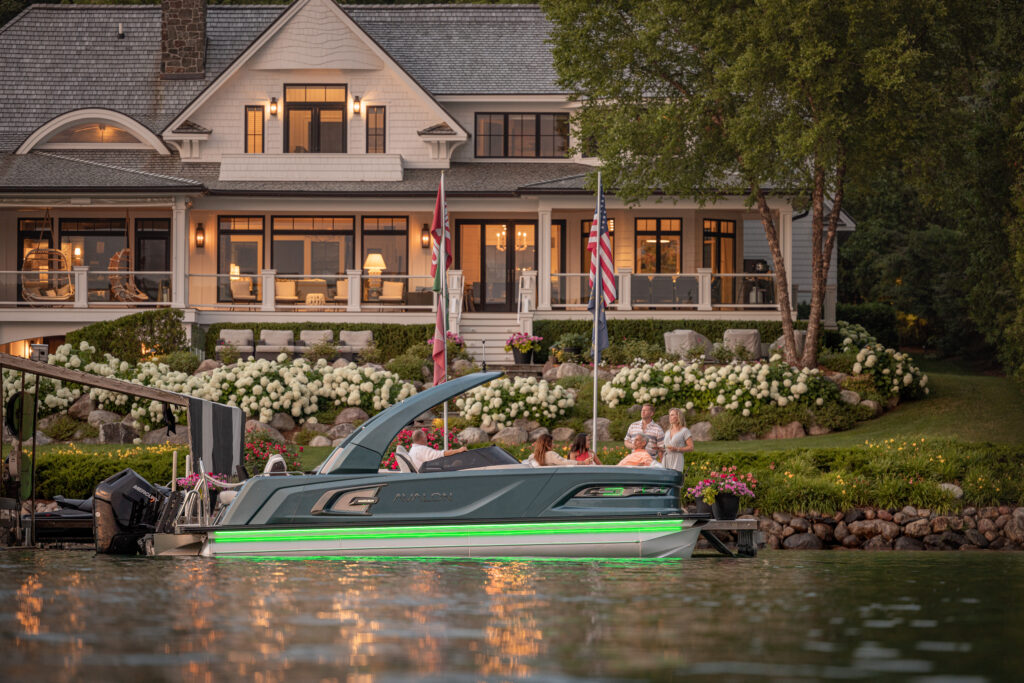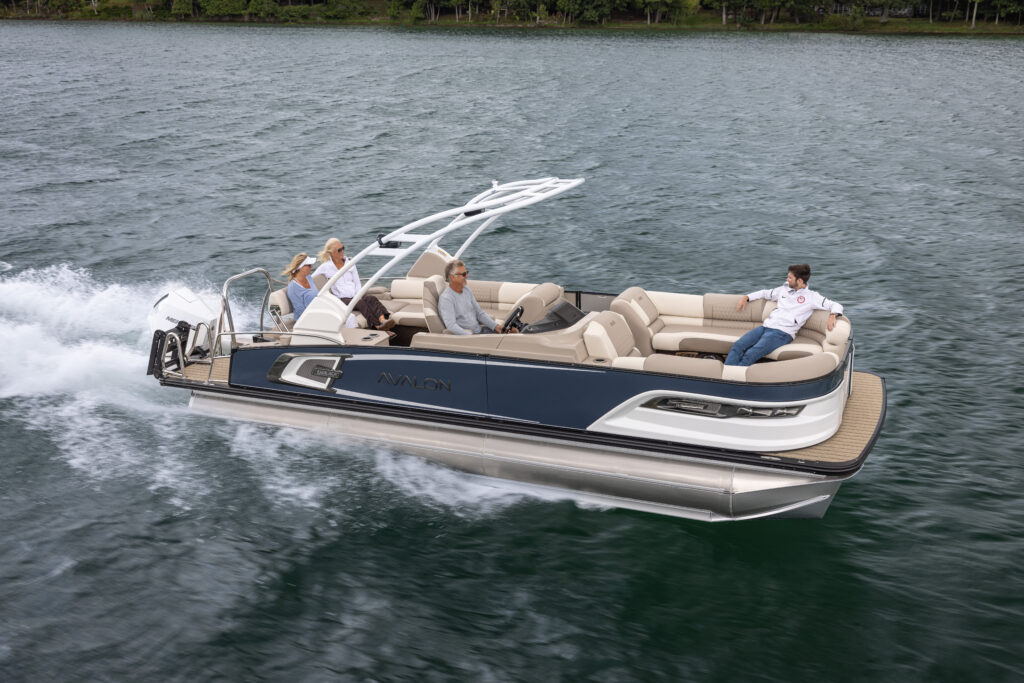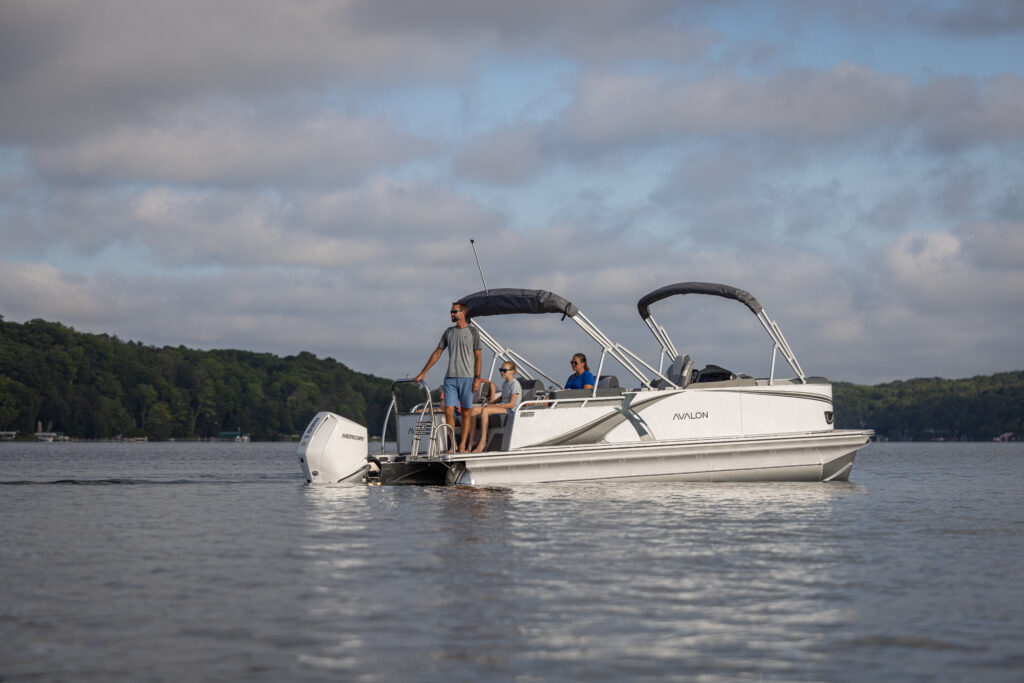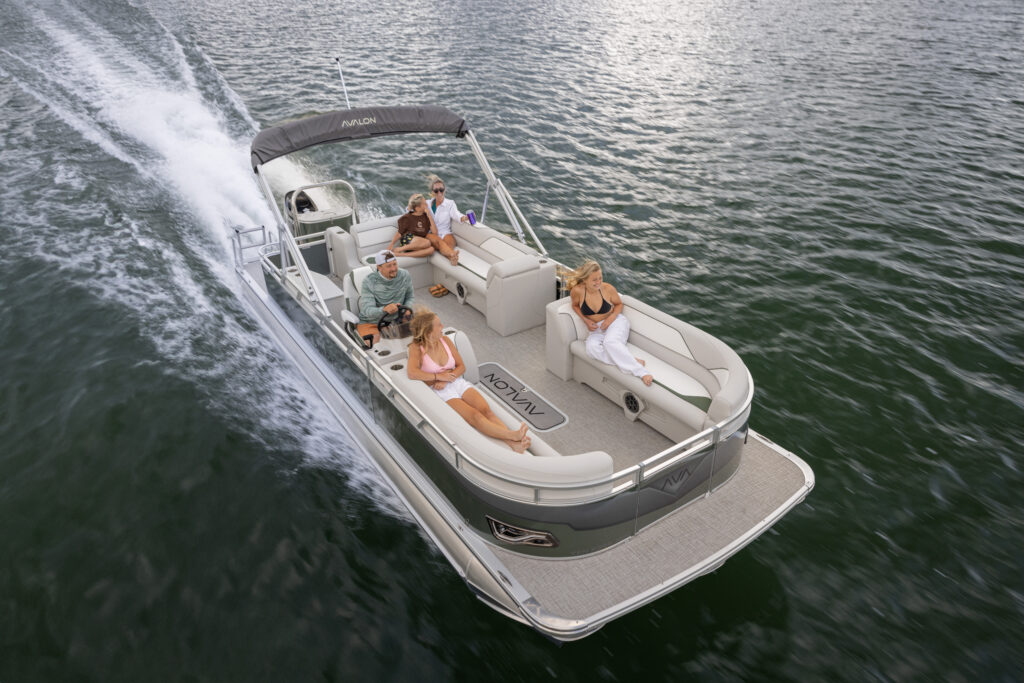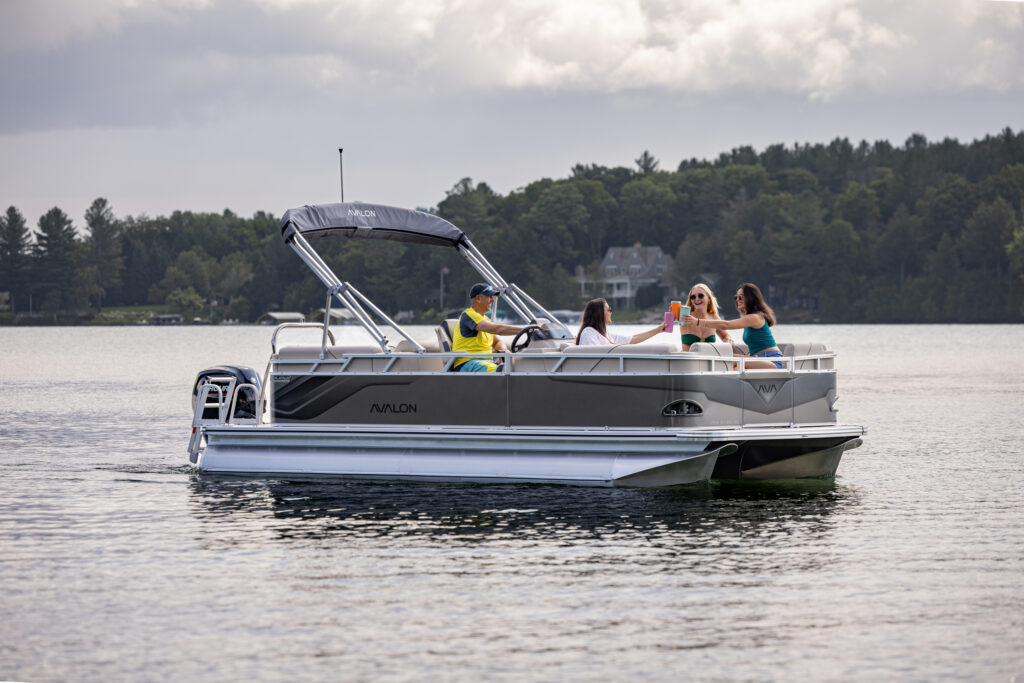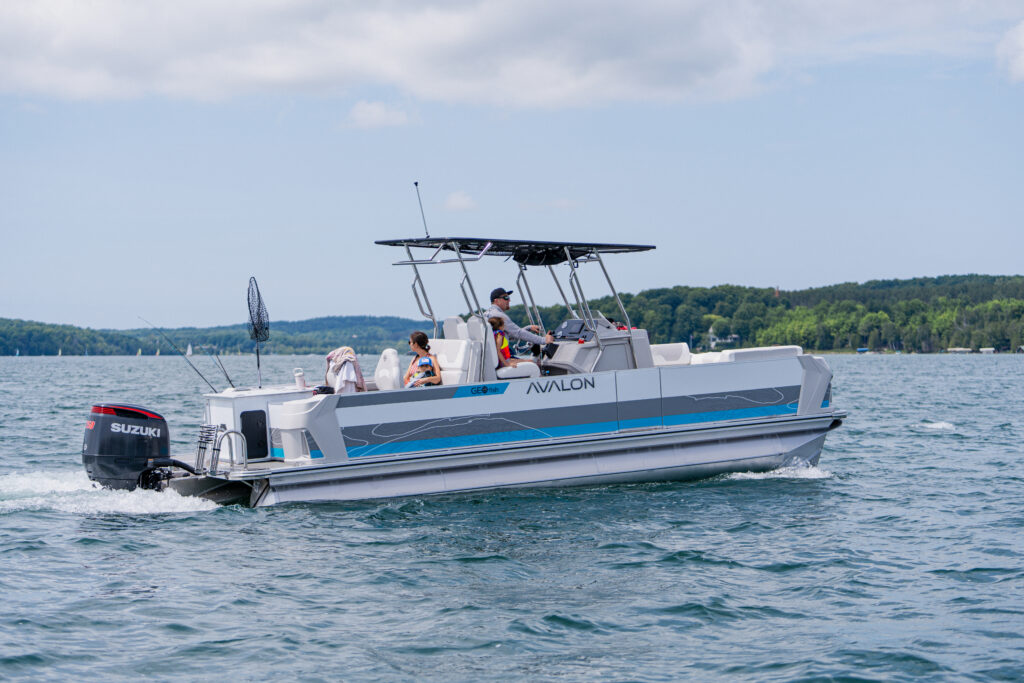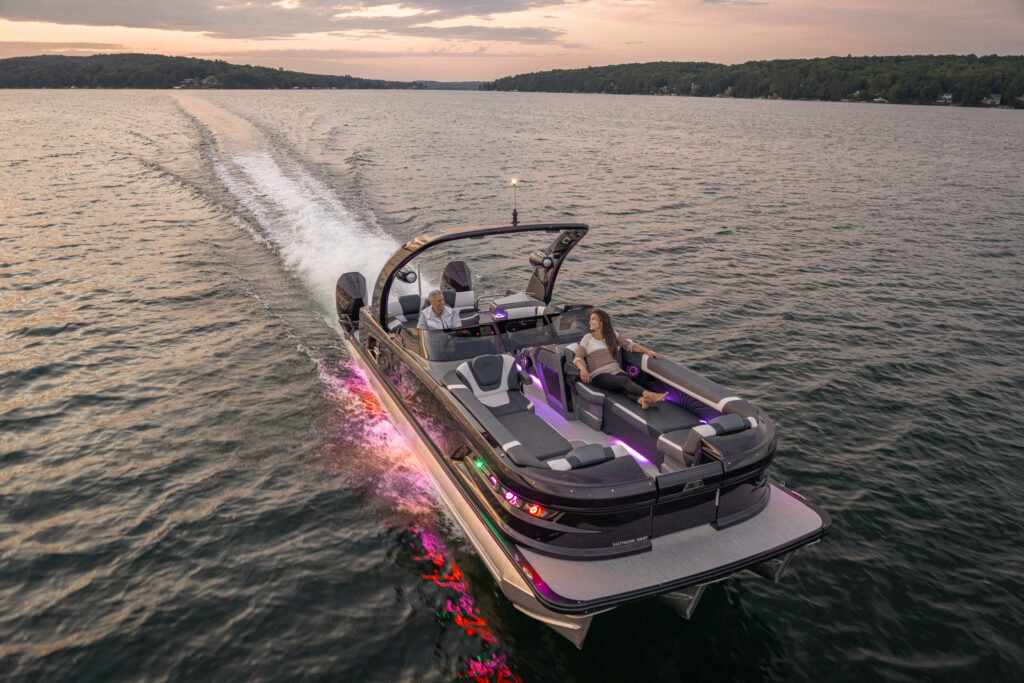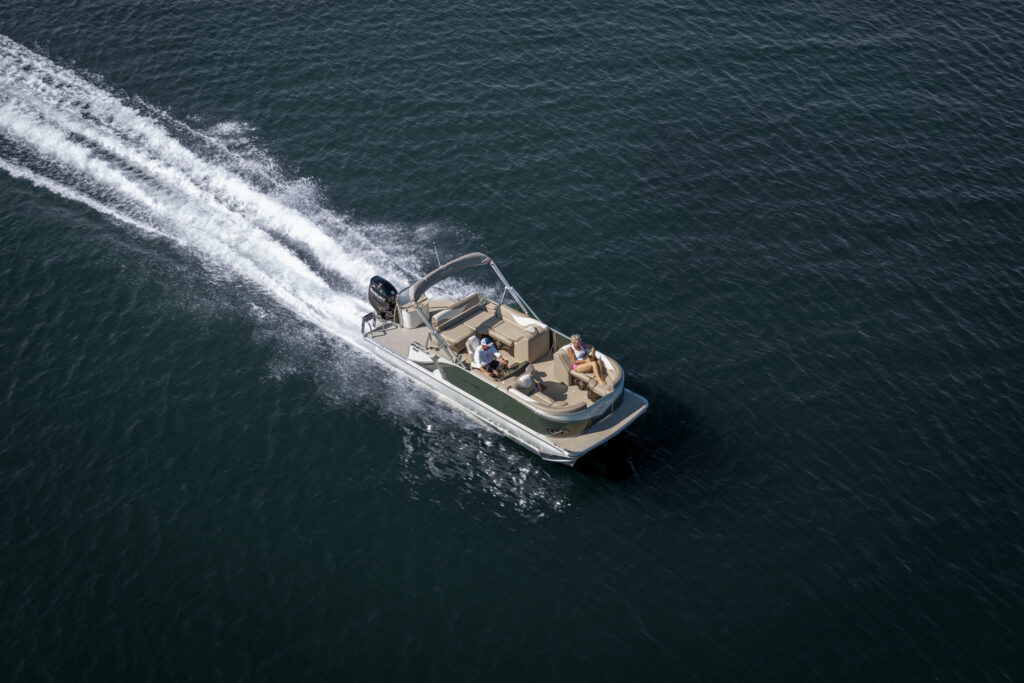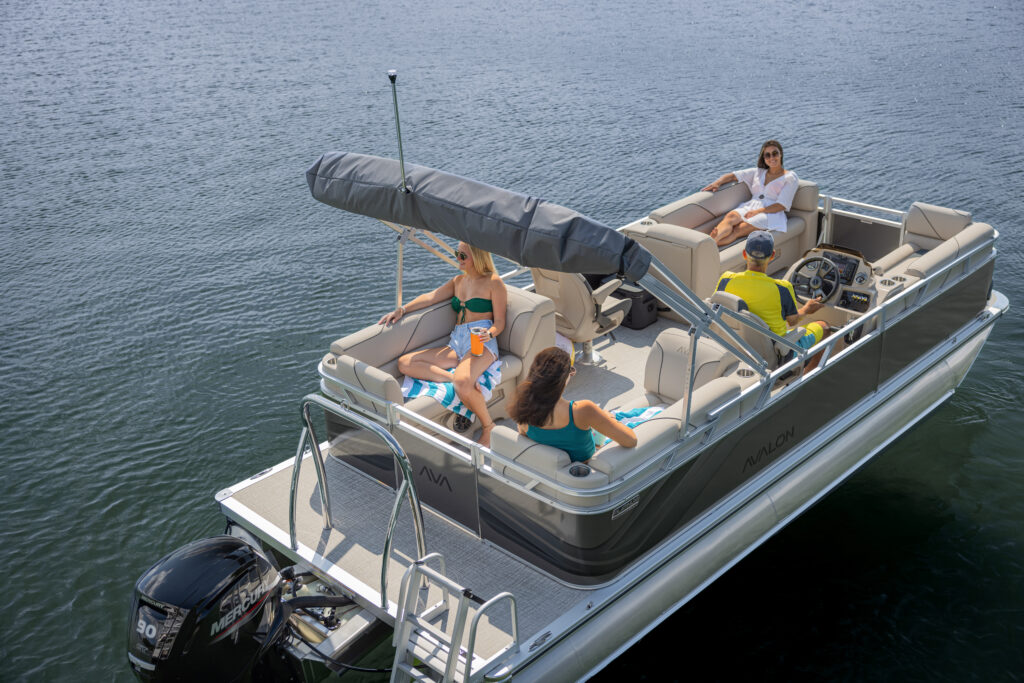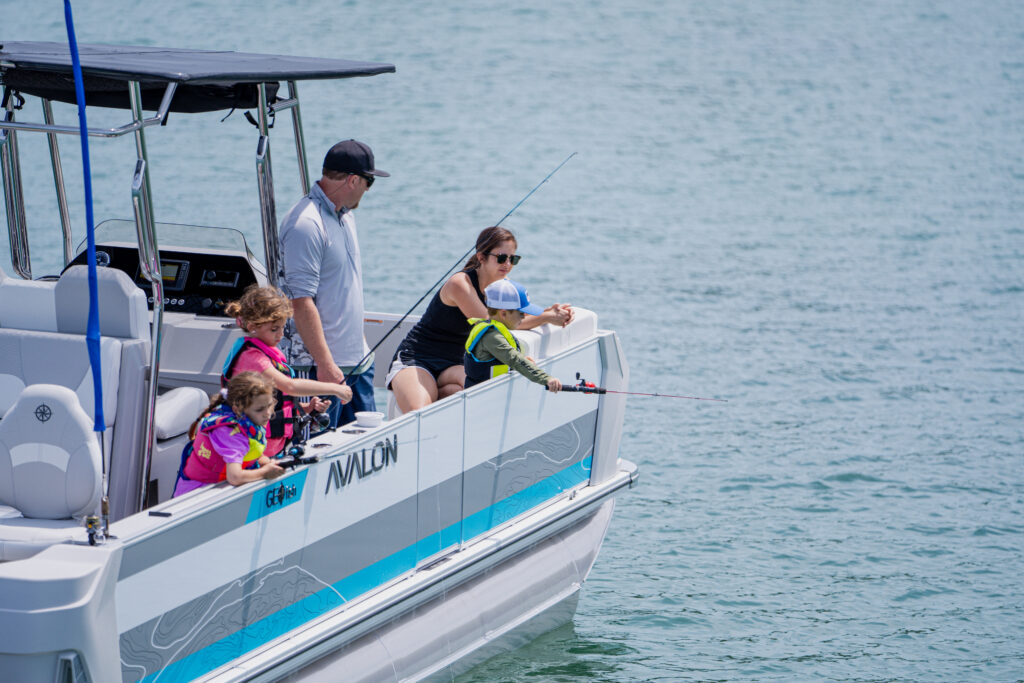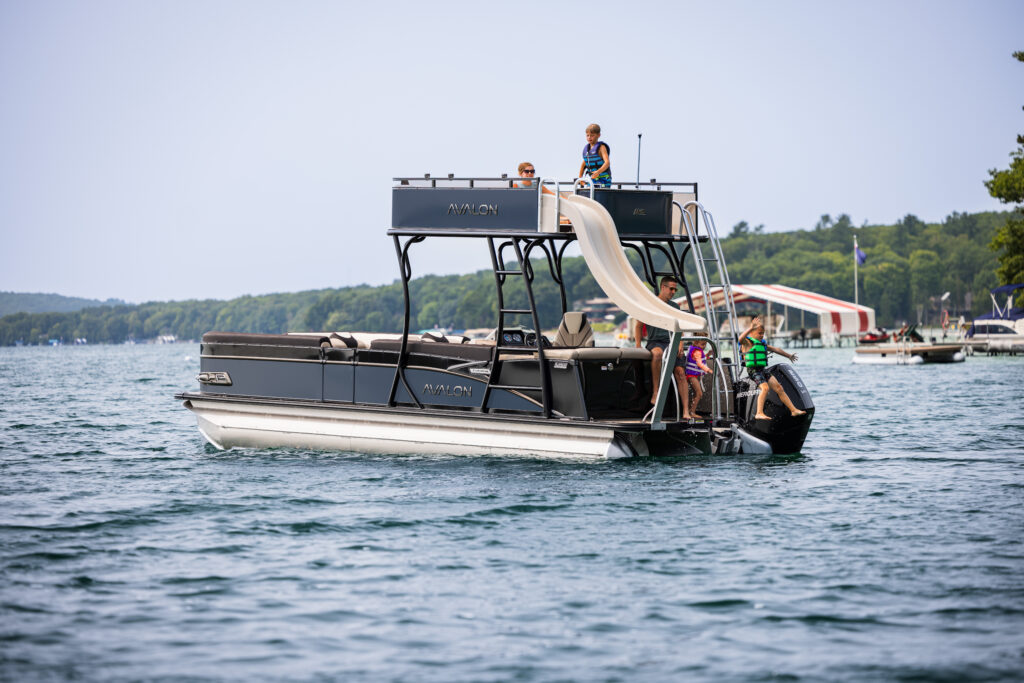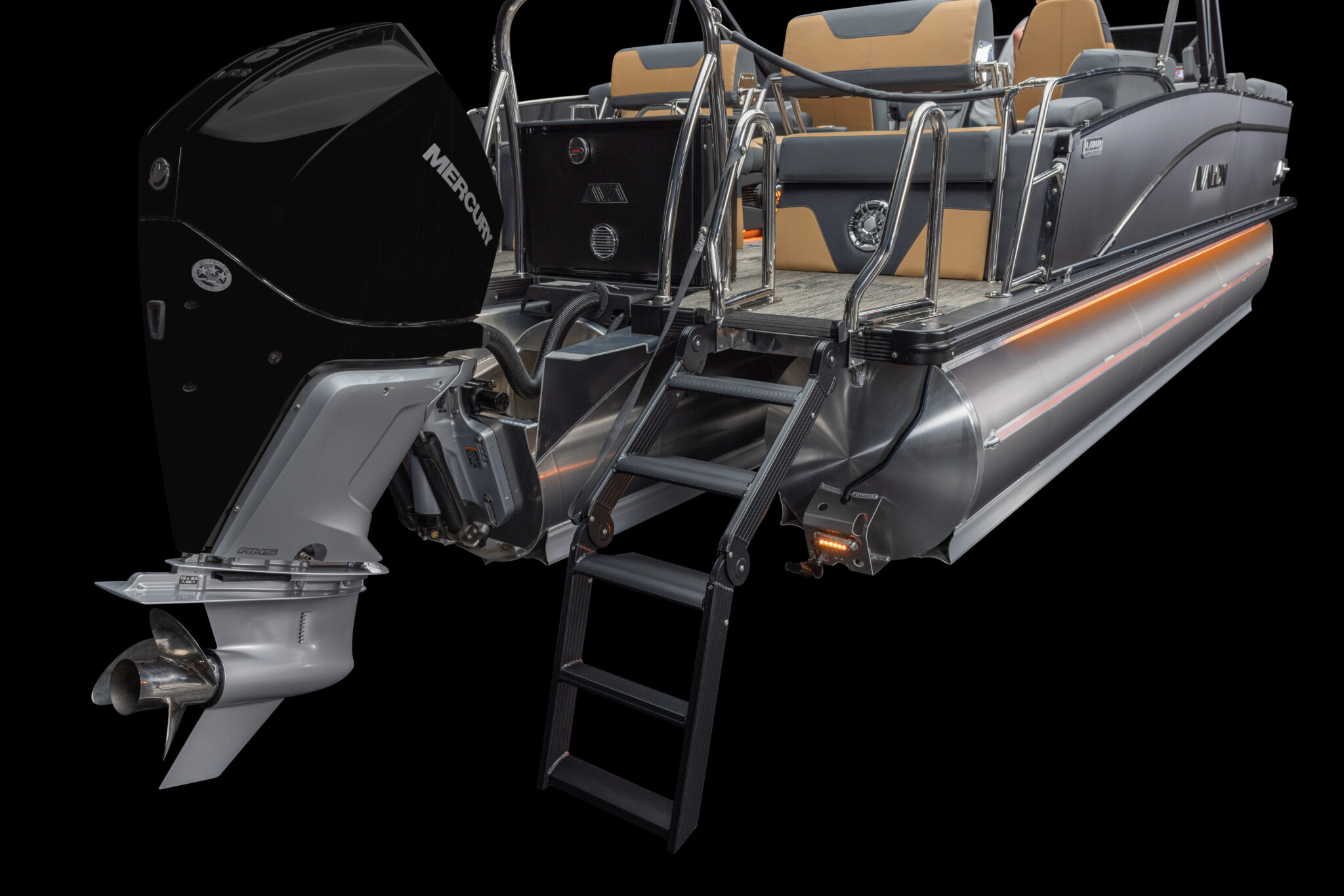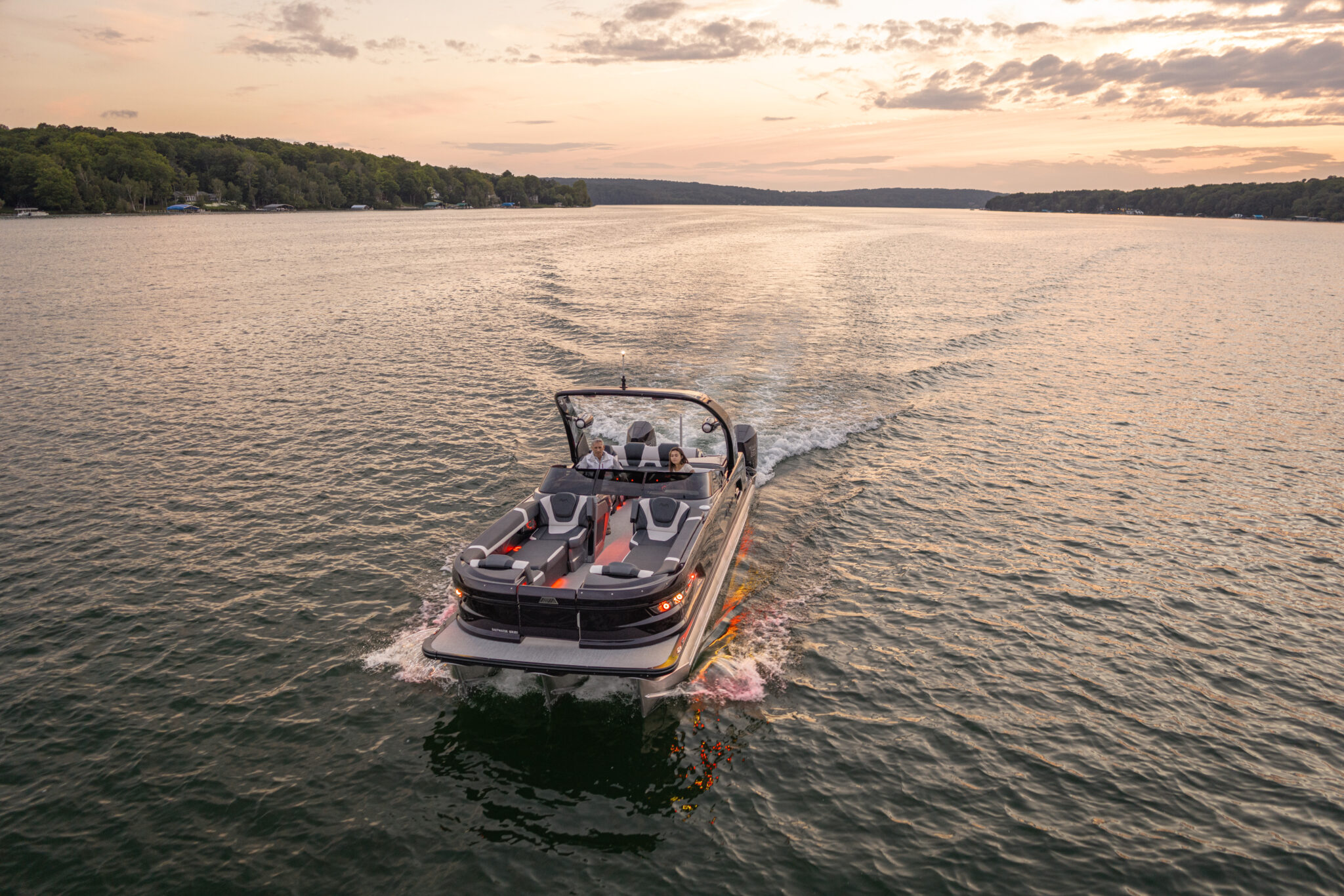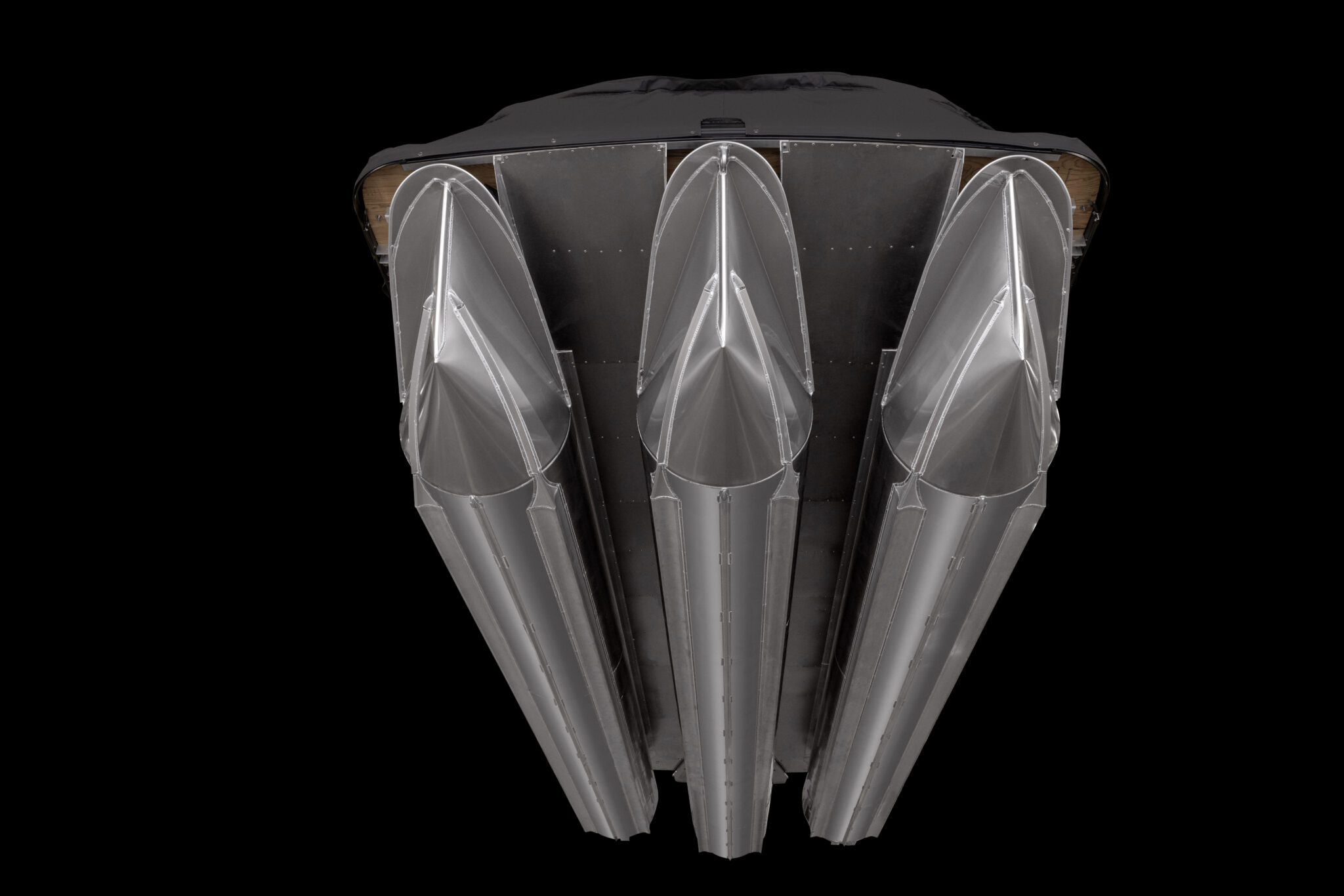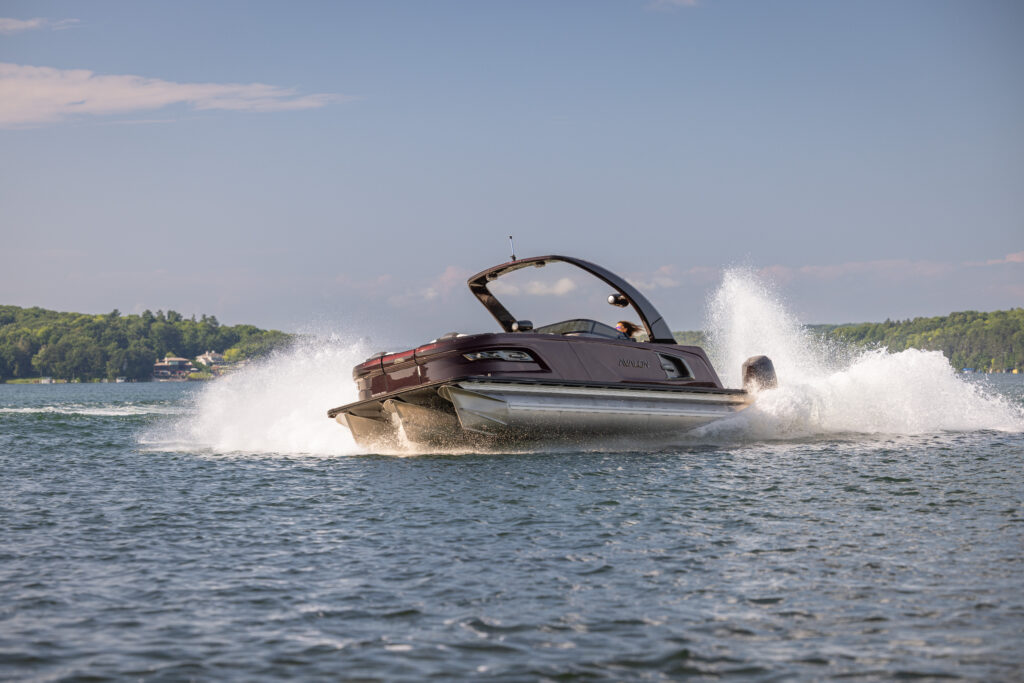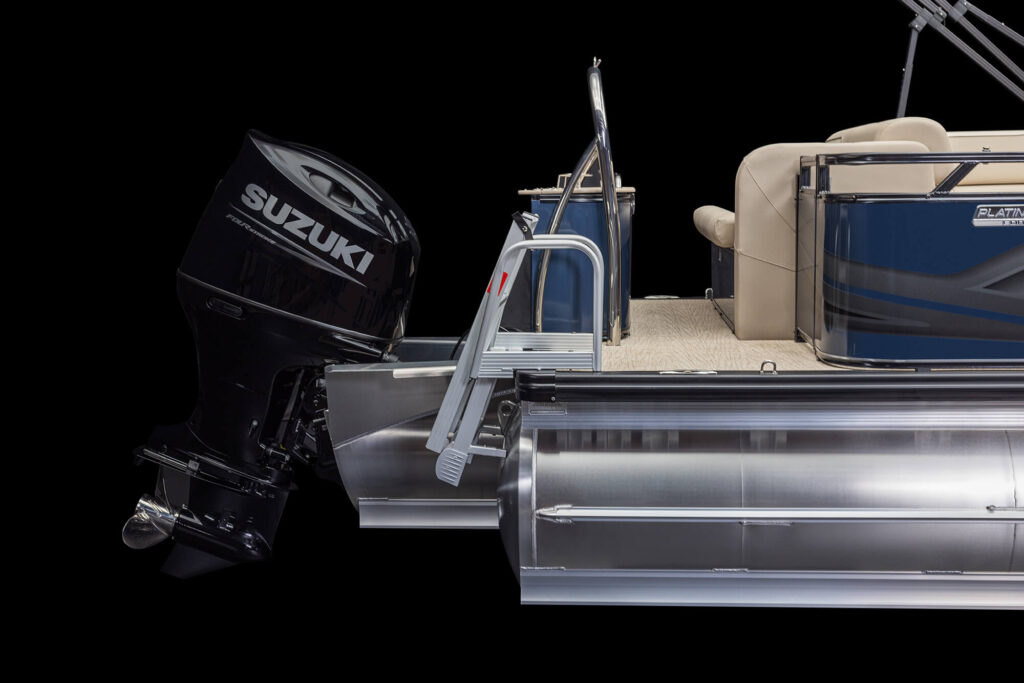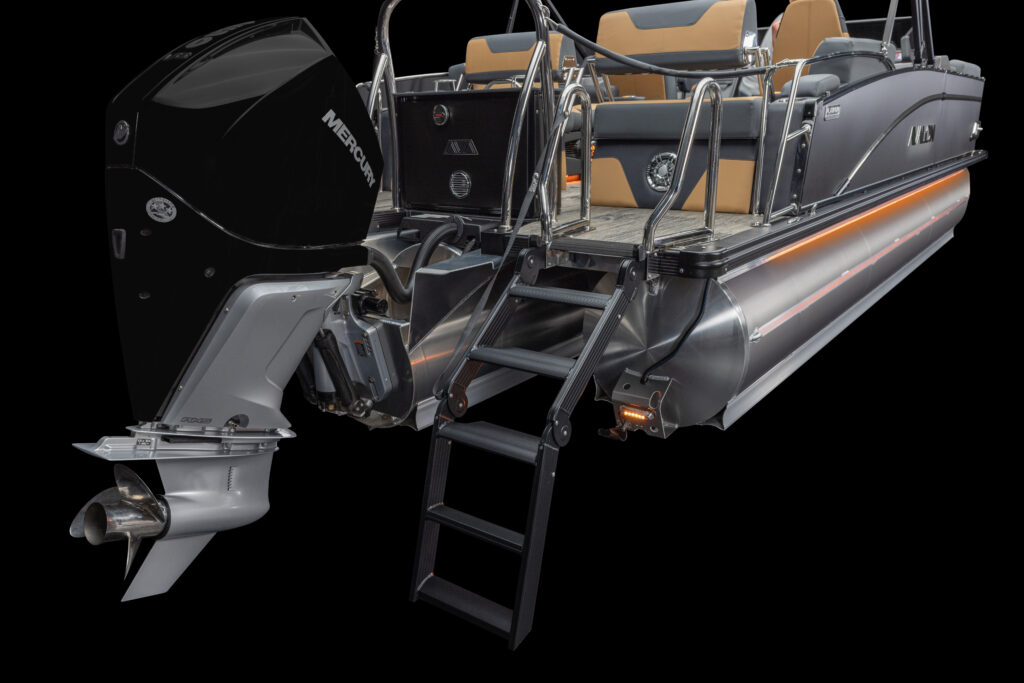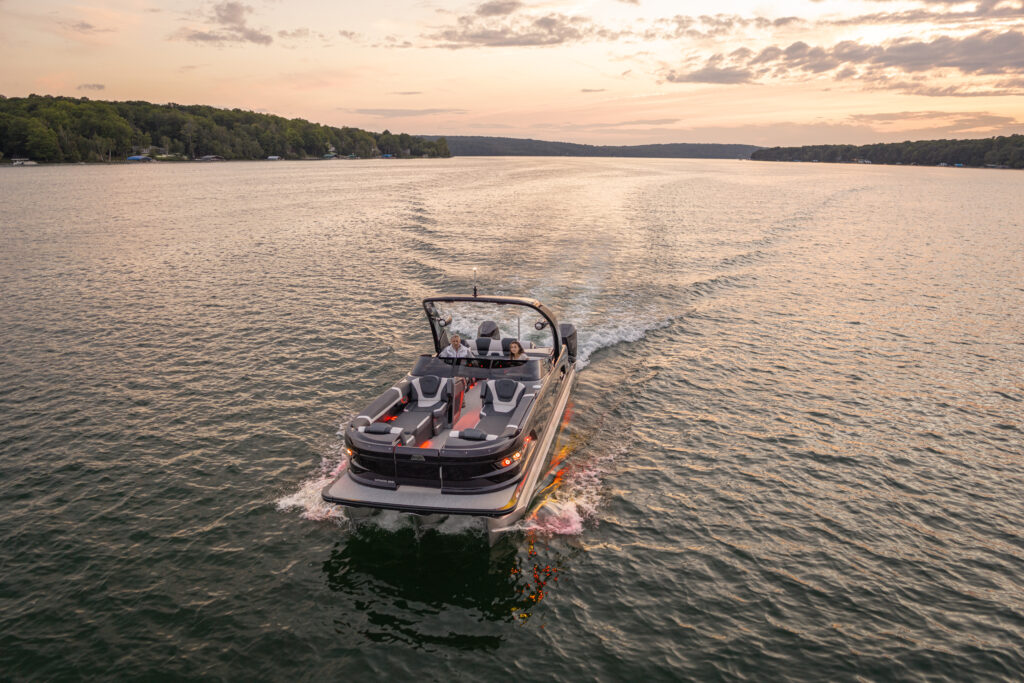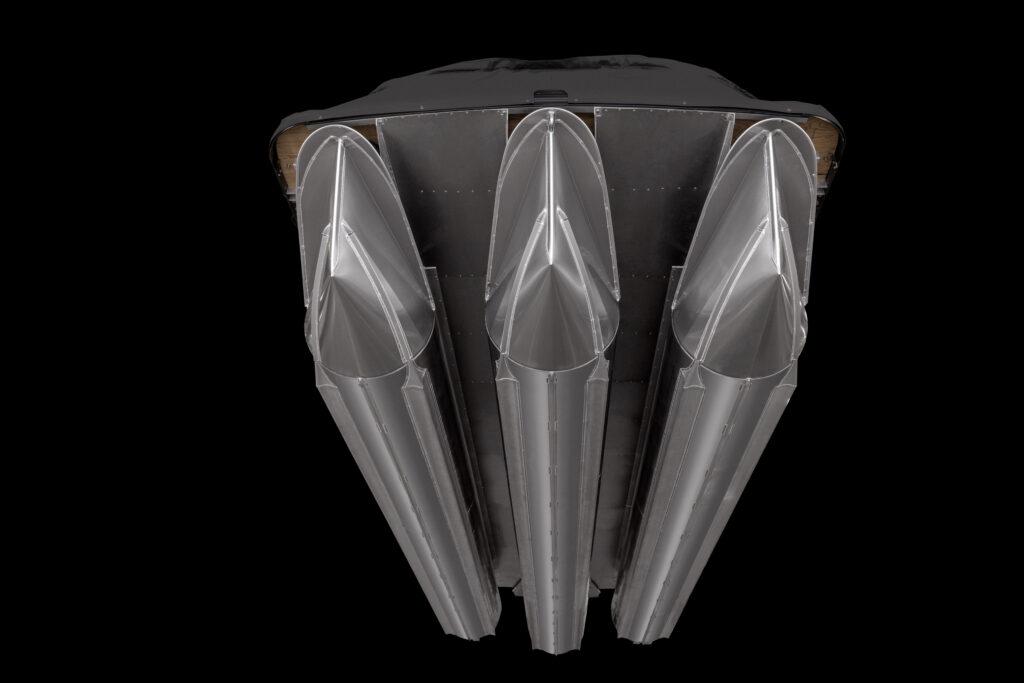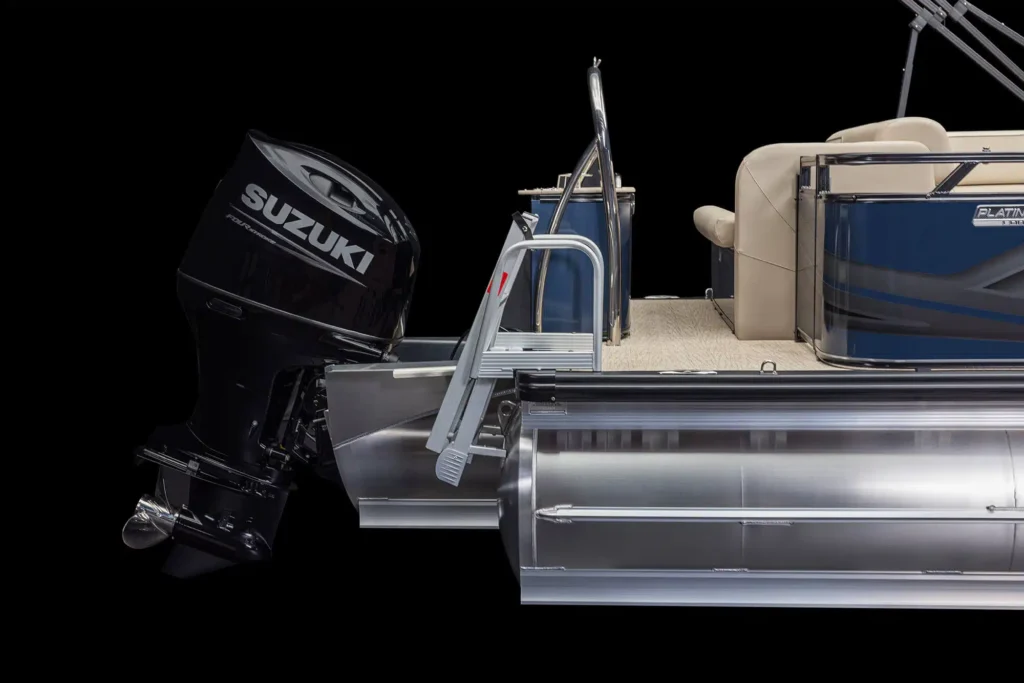Docking a Pontoon Boat
One of the most important parts of owning your vessel is knowing how to properly and safely dock your pontoon boat.
Let’s dive in!
1. Prepare for Docking
To prepare for docking a pontoon boat, you’ll need dock lines and fenders. Dock lines are the ropes used to secure the boat to the dock. They must be strong, durable, and resistant to wear. Fenders are an essential accessory for pontoon boats which help to prevent damage during docking or when tying up alongside other boats. Fenders come in a few different styles, but they all serve to protect the hull from impact damage.
Have your fenders in place before you begin the process, and make sure that your dock lines are ready to be used.
Next, communicate the plan with any crew on board so that they can assist with the docking process.
As the owner of the vessel, it’s your responsibility to take charge and ensure everyone is on the same page. This includes designating key tasks like who will be steering the boat, who will man the dock lines, and who will be standing by to hop off and secure the lines.
If you’re unfamiliar with the specific dock you’re heading for, you’ll need to take the time to identify the best route to the dock so that you and your crew can make it there safely.
You’ll also want to inform your crew of any state-specific laws and regulations that must be followed before initiating the process to start docking a pontoon boat.
2. Evaluate Your Surroundings
The next step to docking your pontoon boat is to check your surroundings and monitor any signs of weather pattern changes. A pontoon is sensitive to wind changes, so use the gusts to your advantage.
Whenever possible, dock into the wind. The subtle – and sometimes no-so-subtle – winds can help you make it those last few feet with more control over your speed. Rather than being pushed faster into the dock, the resistance will help you slow your pace and come in safely.
If you aim upwind just a little, you may find that you can drift into the desired position without having to make many adjustments. From there, it’s smooth sailing, especially when coupled with practice and a sense of familiarity with your vessel.
Also, keep an eye out for any wildlife in the water, depending on where you’re boating. Not all marine life can move out of the way quickly, so a patient and steady hand can guide the boat and prevent injury to both the vessel and the animals.
Finally, check for speed limit signs and alerts in the vicinity of the dock. Most docks are No Wake zones, meaning boaters are expected to go slowly so as not to disturb the water.
3. Get a Clear View
When docking a pontoon boat, having a clear view is vital. The view is often obstructed when sitting at the helm, which isn’t normally an issue in open waters. However, when returning to the dock, it’s important to have the best vision possible. To do so, you’ll want to stand at the helm.
Staying seated as you approach the dock can interfere with your line of sight. Asking all guests and crew who aren’t actively helping prepare the vessel to sit down will help clear the way. You can also ask everyone to move to the rear seats of the pontoon during the docking process.
If you’re still having trouble, try moving the seat at the helm back a few inches to give you more space to watch the waters. From this position, you’ll get a couple more inches of sight that can help you navigate your way to the dock smoothly.
You can also adjust the steering wheel and tilt your head to get a better view as needed. Refer to your boat’s user manual for details on how to adjust and reposition the captain’s seat and steering wheel.
4. Slow and Steady
The key to docking a pontoon boat safely is to come in slow and steady. Make sure you adhere to all of the local regulations regarding speed and wake. The last thing you want is to cause a problem at the dock by coming in too quickly.
To come in slowly, reduce your speed as you begin the docking process. As you get closer to the dock, within the last ten to fifteen feet, shift into reverse to arrest your speed and come to a manageable halt.
Never rush to dock a pontoon boat. This is the fastest way to cause severe damage to not only your vessel, but the dock and property it’s attached to, as well as other docked boats.
You also run the risk of harming any guests or crew onboard by forgoing safe practices, leaving you with more problems than just a damaged hull.
Even if you’re sure that you can make it, risking a fast approach is never worth it. Take it slow and use the wind when possible to help decrease your speed and come to a safe stop.
Additionally, be aware of any kick that can throw you off course. When you shift into reverse too quickly, the resulting kick can mess up the docking process and take more time to correct – or even propel you directly into the dock. It’s better to move slowly and tap the dock than to hit it with enough force to cause damage.
Focus on getting the position of the rudder, drive, and gear case into place first before shifting. Use the minimum throttle necessary to get close to the dock, guiding the boat with the angle of the rudder.
You’ll need to bump the boat in and out of gear as you settle into the dock, and give yourself enough time to react if you tap the dock.
5. Final Steps
Knowing what kind of dock you’re dealing with helps. There are two kinds: floating and fixed.
A fixed dock is both anchored to land and the body of water it hangs over. These types of docks don’t move and instead remain in place, which can be difficult to work with for beginners.
A floating dock is only attached to the land it branches off from but remains somewhat moveable over the water. These docks are more forgiving for beginners or solo sailors.
Familiarity with the type of dock allows you to prep your crew, if applicable, and determine the best way to approach it with clear communication.
The best way to perfect your docking technique is with lots of practice. As you get to know your vessel, you’ll gain a better understanding of how it handles. Understanding your pontoon takes time; don’t get frustrated if your execution is a little off at first.
Any experienced sailor will encourage you to spend more time on the water to improve your skill. With enough patience, and plenty of practice, you’ll be a master sailor in no time.
Final Thoughts on Docking a Pontoon Boat
Docking a pontoon boat may feel like an intimidating or overwhelming process while you’re reading about it. There are several steps involved, and all of them are crucial to ensure a safe and effective docking process.
However, as with any skill, putting those steps into practice is more intuitive than you might think. Once you’re out on the water, you’ll quickly gain confidence, until you’re able to bring your boat into any harbor with confidence and flair.
Looking for more tips on pontoon boat ownership and piloting? Check out our owner resources page for informative articles on everything you need to know about owning, operating, and caring for your boat!

